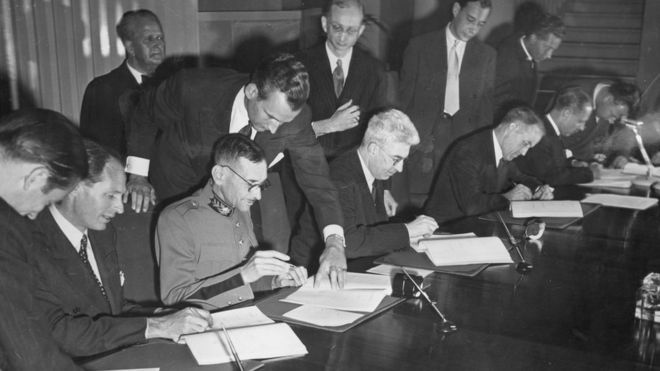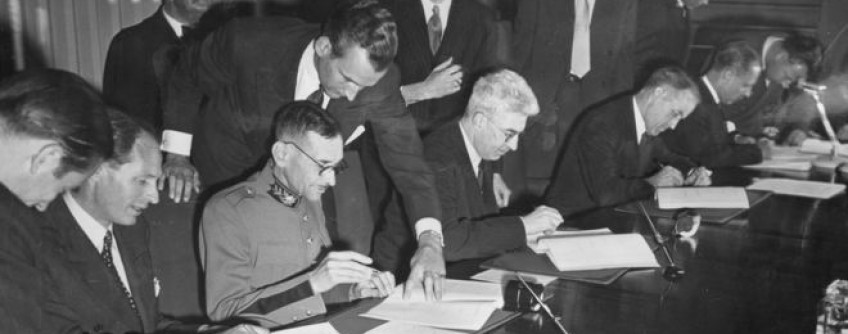Classic / Geneva conventions, International treaties, Mohamed Ogbi, sources of international law / May 28, 2018
The sources of international law
This Article provides a general idea about the basics of international law and its legislative process trying to answer some questions, where does the international law come from?. How is it applied?. And talks about some example of international organisations and agreements such as the Geneva conventions.
Introduction
International law consists of the rules and principles that govern the relations and dealings of nations with each other and outside their borders. International law can be:
Private, when it deals with relationships between private persons of businesses arising out of situations where there is a significant connection to more than one nation.
Public, when discussing rights between two or more states or a state with international organisations citizens or with subjects of other nations
The sources of international law
International law is different from domestic law, which conforms, to a system of hierarchy of courts, which derive the judgement and legislative process. In contrast, the international law is not much coherent as the national law. Many might think that the United Nations general assembly has the legislative authority, but it does not equate to a national legislature, and it does not have a formal hierarchy of international tribunals or courts. Instead, the international law derived from various sources, according to the statute of international court of justice, Article (38), which describes the court in deciding disputes shall apply to:
- International treaties, conventions, agreements, whether private or public are the primary sources of international law. It is possible to conduct an agreement on any matters except when an agreement cause a conflict with the rules of international conduct or obligations of a member state under the charter of the United Nations. If an international agreement is conducted, it creates a law only to the states or parties who agreed and signed it. It does not have to bind other parties that have not agreed to join or to be bound by it.
- International customary law: the consistent behaviour or the general practice of states may lead to the creation of a general practice that would be accepted later as a law. This happens when a practice is widely conducted and accepted by many countries. This is known as the customary international law. The customary law is considered as equal to the international law and they both have the same authority, the reasoning that justifies treating customary practice as law is as follows: If a state act in a certain way consistently or for a period of time, those action suggests that they have “Implicitly Agreed” to a norm of behaviour, this is almost the same as a signature on the agreement. The states must have acted out of a sense to a legal obligation.
Summary of requirements to establish international custom and practice:
- Defined: rules that have been widely accepted and practiced for a long time.
- Establishing the existence of a customary law: The behavioural and psychological element must be provided.
- “USUS” Latin for “usage”: it
- Does not have to be a lengthy practice
- Does not have to be followed by all states
- The custom must be regarded be states observing it as one that they must obligatory follow
- The general principles of law recognised by civilised countries are common to national law systems and considered as a secondary source of international law. These principles may be applied in situations when there are no relevant agreements or no customary international law. In this situation, the general principle may be treated as an international rule of law. Two common examples are
- Confidentiality between a lawyer and a client
- Judicial decisions: The act and judgments of international courts and tribunals may play a role in helping to determine rules of international law, as well as those of a domestic court.
The Geneva conventions as an example of international treaty
The Geneva conventions are the most respected by nations and at the core of international law, the international body that regulates the conduct of military conflict and strives to limit its effects. They specifically protect people who are not taking part in the hostilities (Civilians and aid workers) and those who are no longer participating in the hostilities such as wounded sick and shipwrecked soldiers and POW’s “prisoners of war”.
Brief history of the Geneva conventions:
Being as quietly accepted as they are today, the Geneva conventions certainly have humble beginnings. It began in the war fields of Europe during the French Austrian war in 1859, which witnessed the death of over 60% of the soldiers, because of the poor medical care. During that time there was a man named Henry Dunnant, A Swiss humanitarian and social activist has witnessed the aftermath of the battle of Solferino. He wrote about a book his experience, which inspired the creation of the International Committee of the Red Cross (ICRC) in 1863. The committee and other social activists contributed their effort to begin a process that led to the signing of the first Geneva Convention on august 12th 1865. Twelve countries signed the first draft in Geneva Switzerland. Hearing of this success the United States became a signatory of the Convention 10 years later and created the American Red Cross.
As warfare evolved the rules that guided, it would need to be adjusted to account for these new methods of conflict. After WWI and WWII, Three more Conventions have been signed, thus in total, we have Four conventions and three protocols:
- The first Geneva Convention: protects injured and sick soldiers on land during a war. It contains 64 articles. These provide the protection for wounded and sick, but also for medical personnel, medical units, medical transports and hospital zones.
- The second Geneva Convention: protects wounded, sick and shipwrecked military personnel at sea warfare.
- The third applies to the title of prisoners of war
- The fourth convention provides protection to civilians including in occupied territories.
Additional protocols:
- Additional protocol I- International conflicts.
- Additional protocol II- Non international conflicts.
- Additional protocol III- Additional distinctive emblem











